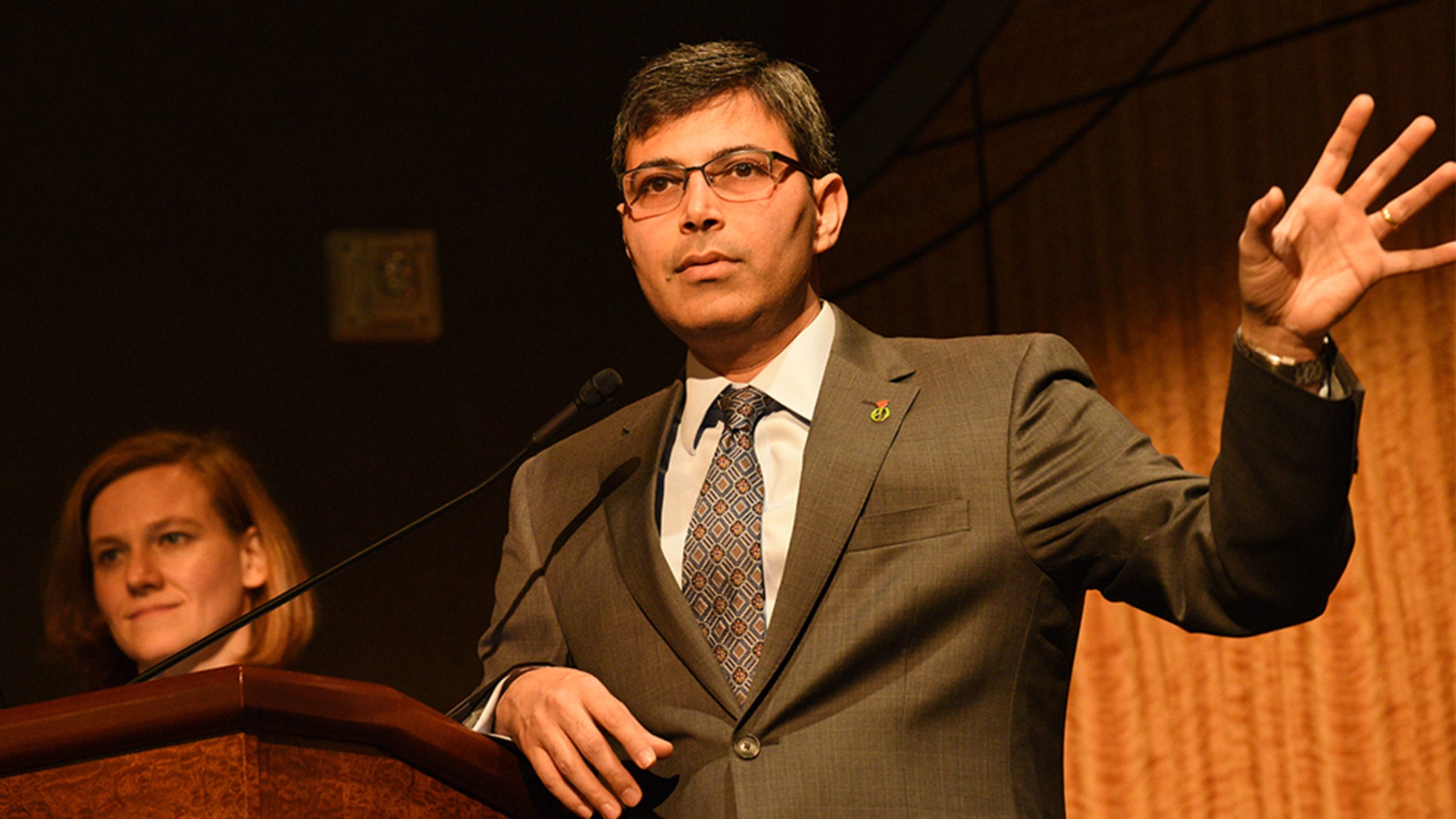View Larger Image

Rohit Dhall, M.D.
UAMS Neurologist Co-Authors Best Practices Paper for Treating 2 Parkinson’s-related Disorders
| LITTLE ROCK — A neurologist at the University of Arkansas for Medical Sciences (UAMS) has co-authored a paper in a leading neurology journal that provides the first best-practices consensus for treating two rare Parkinson’s-related disorders.
Rohit Dhall, M.D., a professor of neurology in the College of Medicine and director of neurodegenerative disorders at UAMS, was one of several co-authors of the paper, which was published July 1 in Frontiers in Neurology.
The peer-reviewed article provides decades’ worth of knowledge gathered from experts at 25 CurePSP Centers of Care, including UAMS, across the United States to help physicians and neurologists improve the care of patients with progressive supranuclear palsy (PSP) and corticobasal syndrome (CBS).
PSP, an uncommon degenerative brain disorder with no known cause or cure, causes progressive impairment of balance and walking, impaired eye movement, rigidity, speech difficulties and problems swallowing and eating, and affects between 40 and 60 people in Arkansas at any given time. It is easily mistaken for Parkinson’s disease, which has similar symptoms.
CBS, a form of atypical Parkinsonism, is less prevalent, usually affecting three to five people in the state at one time. It affects cognition and movement, often making it hard for an afflicted person to control an arm and/or leg on one side of the body.
Both disorders are considered tauopathies, which are neurodegenerative disorders characterized by damage to the brain from abnormal deposits of tau protein. They start affecting people in their mid-60s and lead to death after an average of seven years. There is no cure for either disorder.
CurePSP, an organization devoted to support, research and education for PSP and CBS, created its Centers of Care network in North America in 2017 to improve patient access to clinical expertise and develop collaborations. UAMS joined the network about three years ago.
“I think it’s our job to increase awareness and improve management of these disorders,” said Dhall, who is a former director of the National Parkinson Foundation Center of Excellence at the Muhammad Ali Parkinson Center in Phoenix, Arizona.
“Though there’s no cure now for PSP or CBS, many physicians, including neurologists, are not familiar with the treatments for basic symptoms,” he said. “We summarize approaches to ease emotional and physical suffering, avoid complications and hopefully delay disability.”
Because it’s hard to generate clinical trials for rare diseases, experts’ opinions are the easiest way of developing a consensus for treatment, he said.
Dhall said that in gathering and sharing expertise about treatment methods, “We saw several areas where the directors of the centers saw a consensus.”
Some surprises also emerged, he said. For example, certain medications that patients with disorders take for unrelated reasons — such as popular antidepressants or bladder medications — can worsen their conditions. Also, advising patients with motor issues to use a cane is often counter-productive. Dhall said canes are helpful for preventing forward falls, but not side or backward falls, so the paper advises using weighted walkers instead for increased stability.
“The authors hope that this publication will serve as a convenient guide for all clinicians caring for patients with PSP and CBS and that it will improve care for patients with these devastating but manageable disorders,” according to an abstract of the paper.
The collaborators on this paper represent years of experience, Dhall said. Some of the contributors have devoted their entire careers to the study of these two disorders.
“We tried to make sure it was succinct, easily digestible, accurate and specific, but without extraneous detail,” Dhall said.
UAMS is the state’s only health sciences university, with colleges of Medicine, Nursing, Pharmacy, Health Professions and Public Health; a graduate school; a hospital; a main campus in Little Rock; a Northwest Arkansas regional campus in Fayetteville; a statewide network of regional campuses; and eight institutes: the Winthrop P. Rockefeller Cancer Institute, Jackson T. Stephens Spine & Neurosciences Institute, Harvey & Bernice Jones Eye Institute, Psychiatric Research Institute, Donald W. Reynolds Institute on Aging, Translational Research Institute, Institute for Digital Health & Innovation and the Institute for Community Health Innovation. UAMS includes UAMS Health, a statewide health system that encompasses all of UAMS’ clinical enterprise. UAMS is the only adult Level 1 trauma center in the state. UAMS has 3,485 students, 915 medical residents and fellows, and seven dental residents. It is the state’s largest public employer with more than 11,000 employees, including 1,200 physicians who provide care to patients at UAMS, its regional campuses, Arkansas Children’s, the VA Medical Center and Baptist Health. Visit www.uams.edu or uamshealth.com. Find us on Facebook, X (formerly Twitter), YouTube or Instagram.
###